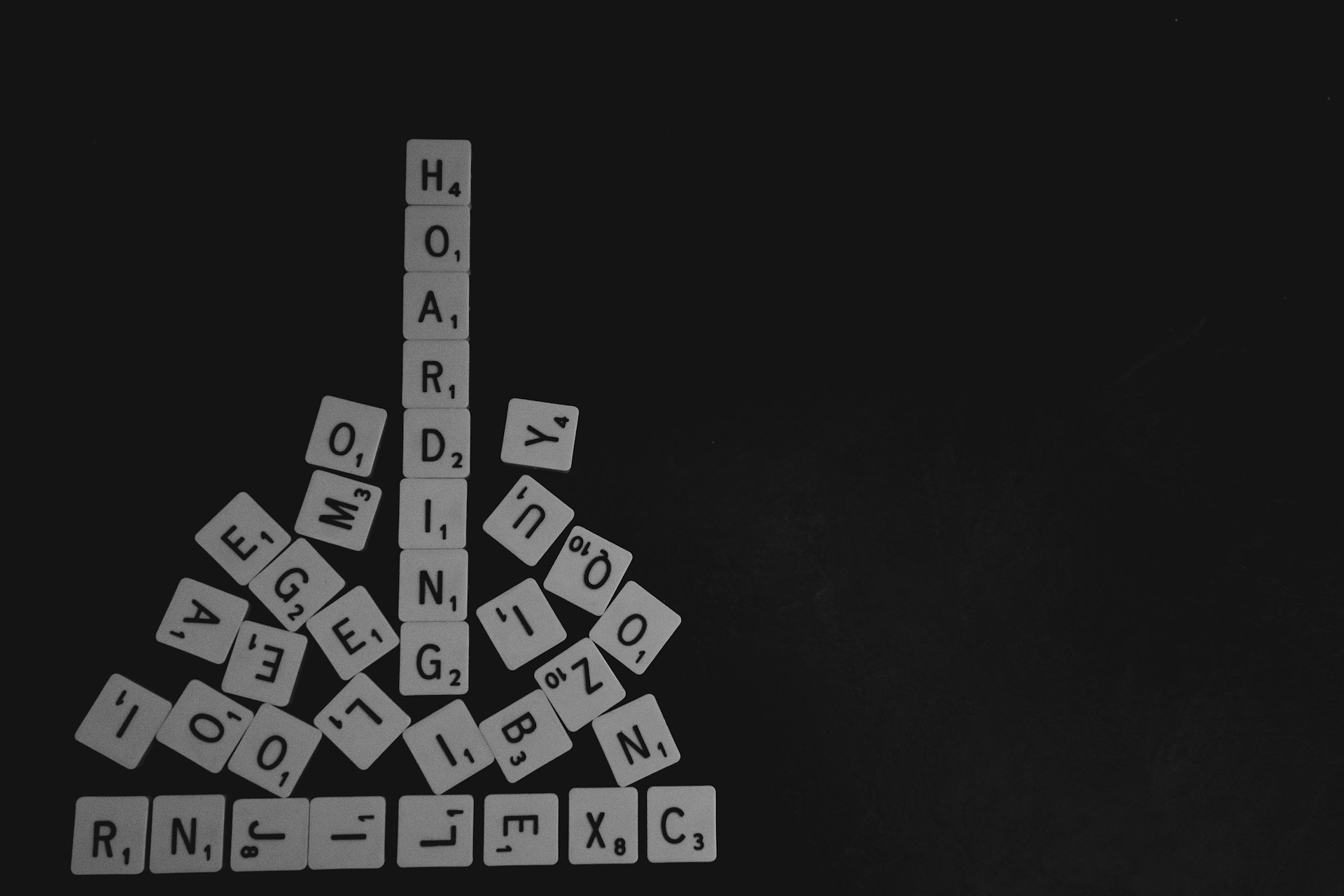By Ashley Barnes, M.S.
What is hoarding disorder?
Hoarding disorder (HD) is a mental health disorder where an individual collects a large amount of possessions and experiences difficulty parting with possessions to the point where parting with possessions prompts profound emotional distress. Approximately 2% to 6% of people in the United States have hoarding disorder (Cleveland Clinic, 2022).
The Diagnostic and Statistical Manual of Mental Disorders (DSM) previously classified hoarding disorder as a subtype of OCD, “however, healthcare providers were encountering people with hoarding behaviors who didn’t have any other mental health conditions. After more research, hoarding disorder was included as an isolated condition, in the OCD spectrum, in the fifth edition of the Diagnostic and Statistical Manual of Mental Disorders (DSM-V), which is the most recent edition” (Cleveland Clinic, 2022).
Similar to many of us, people with hoarding disorder keep objects due to their sentimentality, aesthetics, and usefulness. These qualities are magnified in the eyes of someone living with hoarding disorder to the point where an emotional attachment is formed with objects. Oftentimes, people with hoarding disorder have plans for objects that aren’t realized, such as cardboard toilet paper rolls that could be used to make binoculars for a child’s art project; a person with hoarding disorder keeps collecting the rolls instead of gifting them to a preschool. These behaviors stem from characteristics that are positive, such as wanting to conserve resources.
However, hoarding disorder can lead to dangerous clutter and can impair life in many ways, such as functioning at work, relationships, and tasks of daily living. Hoarding disorder can prompt feelings of stress and shame. Sometimes, people will collect a large amount of animals that aren’t properly cared for. It can lead to unsafe and unhealthy living conditions as well.
In many cases, a traumatic event such as a divorce or the death of a loved one will prompt the onset of hoarding disorder. Research has also indicated that hoarding can accompany another mental health problem, such as OCD, other anxiety disorders, depression, PTSD, or ADHD.
The following are ways that you can help a loved one struggling with hoarding disorder:
Educate Yourself
Educating yourself about hoarding disorder is a crucial first step in helping your loved one. People who don’t understand the nature of the disorder often view hoarding as a choice or personal failing on part of the hoarder. However, hoarding disorder is a mental health disorder that causes the person experiencing it profound distress. It is easier for us to be empathetic and offer the most appropriate support if we understand the illness our loved one is suffering from.
Engage in Healthy Communication
It can be challenging to bring your concerns up with a loved one who is struggling with hoarding disorder, especially if your loved one doesn’t recognize the situation as being problematic. It can also be an emotional conversation for you.
It is important not to use judgmental language, as people who hoard often experience deep feelings of shame and guilt about their situation. Using judgmental language with your loved one may deepen these uncomfortable feelings and prompt their protective behaviors of defensiveness or stonewalling, which won’t lead to a productive conversation.
Listening to and using the same language that your loved one uses can be important in creating a safe space for them. What you may consider as “junk,” your loved one might consider as their “collection.” By referring to their “collection,” you can build trust and help your loved one feel understood.
Examine Your Own Behavior
Are you enabling their hoarding habits? Storing their items or offering to pay for extra storage space is considered enabling. Going shopping/scavenging with your loved one, offering to pay their debts due to hoarding, or gifting them items that will add to their hoarding problem are other ways of enabling. Having boundaries that prevent enabling behaviors can reduce your feelings of resentment and can prevent your loved one’s situation from worsening.
Don’t clean up after your loved one, as tempting as it might be. The more you clean up after your loved one, the less motivated they will be to address the problem themselves.
It is also important to manage your expectations around hoarding; hoarding disorder is not cured with a magic wand and takes time to address. Similarly, it will take time for the hoard itself to be addressed.
Offer to Help
People who hoard often struggle with decision-making and finding the motivation to change. Your help and understanding can be crucial. Offer to work together at your loved one’s pace. It’s also important not to tell your loved one what they should or shouldn’t discard, as it is important that the person who is hoarding maintains a felt sense of control.
Focusing on safety concerns and emphasizing harm reduction can be a way to emphasize why a loved one could benefit from your help. Offering to help through working together to reduce the risk of accidents or fire hazards can prompt the process of change.
You can also offer to research support groups, treatment programs, hoarding cleanup services, or therapists in your area.
Seek Help from a Mental Health Professional
Mental health professionals are trained in evaluation, assessment and diagnosis, and treatment of mental health disorders, and include psychiatrists, psychologists, and therapists. If you suspect that your loved one has hoarding disorder, it can be beneficial to seek out a clinician or physician who specializes in anxiety and OCD-related disorders, as hoarding disorder is closely related.
Mental health professionals can assess for hoarding disorder and in doing so will ask questions related to the following criteria for hoarding disorder:
- Ongoing difficulty getting rid of possessions whether they have value or not.
- Feeling a strong need to save items and feelings of distress associated with discarding items.
- Living spaces that are so filled with possessions that they’re unusable and/or unsafe (HelpGuide, 2023).
After assessing, mental health professionals can develop a treatment plan to help your loved one.
Helping a Loved One Can Start with Helping Yourself
Supporting a loved one who is navigating a hoarding disorder can be an emotionally draining, painful experience. You may worry about their health and safety, may be grieving the type of relationship you had hoped to have with them, or may feel resentment due to the impact it has on you.
It is important to acknowledge what is truly in your control and what truly isn’t in your control. You can communicate your concerns in a healthy way, express your love and care, connect your loved one to mental health professionals, connect your loved one to hoarding cleanup services, or even report to child protective services (CPS)/adult protective services (APS) if people living in the environment are in danger of harm or neglect. What is not within your control is whether your loved one chooses to receive the help you provide.
It can be helpful to seek help from a therapist to have space to process emotions, feelings, and thoughts that this brings up for you. Your mental health matters too.
Let Us Support You and Your Loved One
At the Mental Health Center, we work with skilled physicians who are trained in assessing and treating OCD and anxiety-related disorders. Physicians and therapists we work with offer virtual and in-person sessions.
We also work with physicians who provide home visits, as we are mindful that some patients are best served in their own home. Lydia Ann, MD offers at-home sessions coming from Van Nuys, California; Dr. Ann charges her standard session rate for the commute to a patient’s home, the visit itself, and the commute back. Additionally, Miriam Winthrop, MD offers at-home visits patients, also charging her standard session rate for the commute to a patient’s home, the visit itself, and the commute back. For more information, feel free to contact our team at (310)601-9999.
Online Resource.
- International OCD Foundation – provides education and resources on hoarding disorder.
References
Cleveland Clinic (2022). Hoarding disorder: What it is, causes, symptoms & treatment. Cleveland Clinic. https://my.clevelandclinic.org/health/diseases/17682-hoarding-disorder
HelpGuide (2023). Helping someone with hoarding disorder. HelpGuide.org. https://www.helpguide.org/articles/anxiety/helping-someone-with-hoarding-disorder.htm


